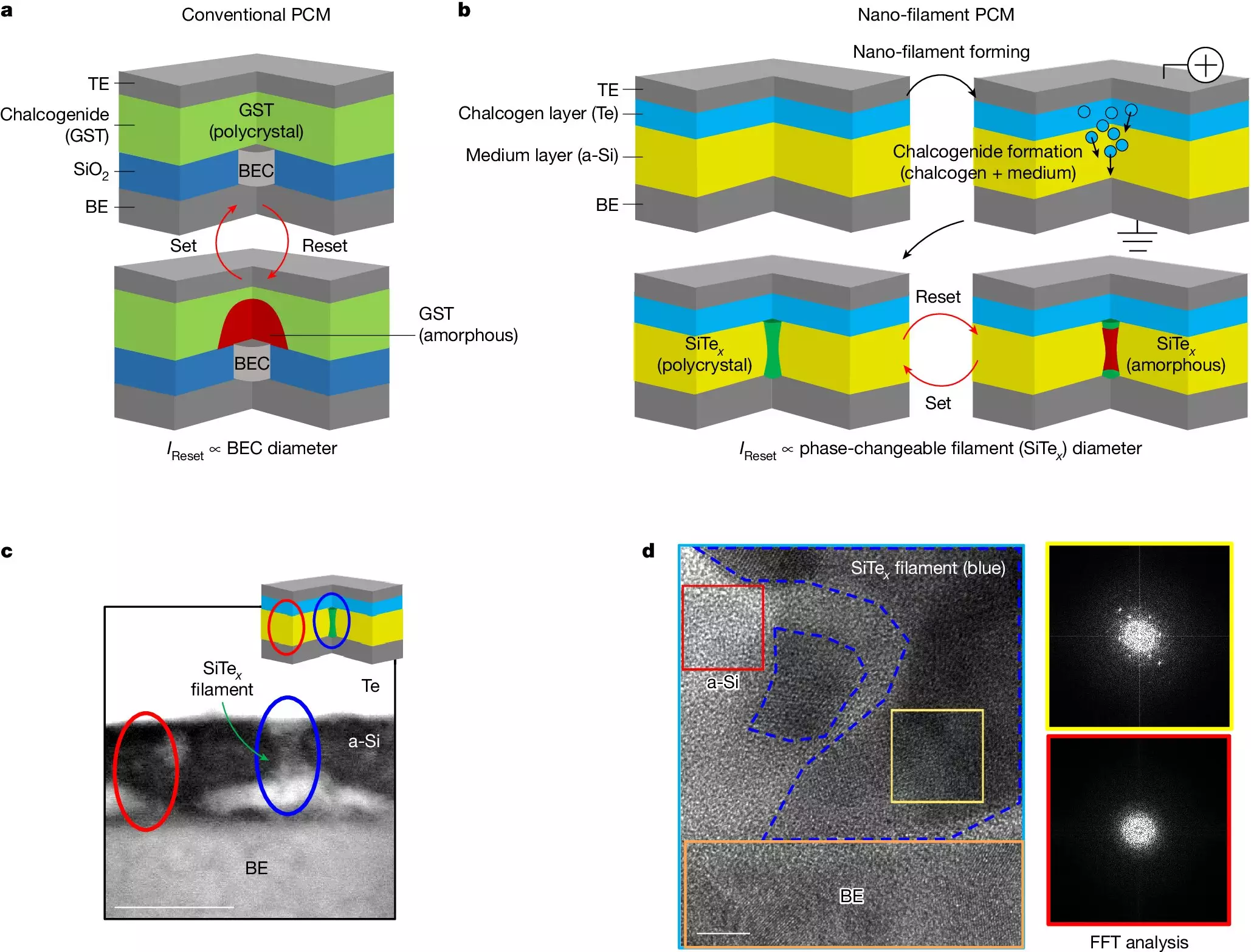In a groundbreaking development, a team of Korean researchers led by Professor Shinhyun Choi has introduced a new memory device that has the potential to revolutionize existing memory technologies. This innovative device boasts ultra-low–power consumption and can potentially replace traditional memory options like DRAM and NAND flash memory. The research conducted by Professor Choi’s team at the KAIST School of Electrical Engineering has been published in the prestigious journal Nature.
DRAM, known for its high speed, lacks the ability to retain data when the power source is turned off, rendering it volatile. On the other hand, NAND flash memory, a storage device, offers non-volatile characteristics but has slower read/write speeds. This limitation in existing memory devices prompted the need for a solution that combines the best of both worlds – high speed and non-volatility.
The team of researchers addressed the inefficiencies of traditional memory devices by developing an ultra-low–power phase change memory device. By electrically forming a nanometer-scale phase changeable filament, the researchers eliminated the need for expensive fabrication processes and significantly reduced power consumption. This approach not only lowers the manufacturing costs but also enhances energy efficiency, making it an attractive option for next-generation memory hardware.
Previous attempts to create efficient phase change memory devices involved reducing power consumption by shrinking the physical size of the device through lithography technologies. However, these efforts were met with limitations due to minimal improvements in power consumption and increased costs and fabrication complexities with each iteration. In response, Professor Shinhyun Choi’s team devised a method to electrically form phase change materials in extremely small areas, resulting in a 15 times reduction in power consumption compared to conventional phase change memory devices.
The introduction of this ultra-low–power memory device marks a significant advancement in memory technology. With the potential to replace existing memory options and drive the development of neuromorphic computing systems, this innovation opens up new possibilities for the future. Professor Shinhyun Choi, expressing confidence in the research’s impact, believes that this novel approach will address the longstanding challenges in memory device production, offering improved manufacturing costs and energy efficiency.
The development of the ultra-low–power phase change memory device represents a major breakthrough in the field of memory technologies. With its ability to address the limitations of existing memory options and pave the way for next-generation artificial intelligence hardware, this innovation holds great promise for the future of computing.


Leave a Reply